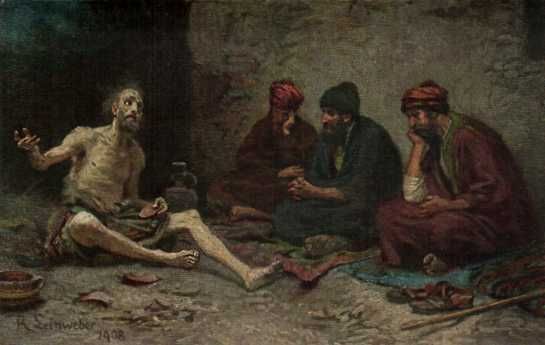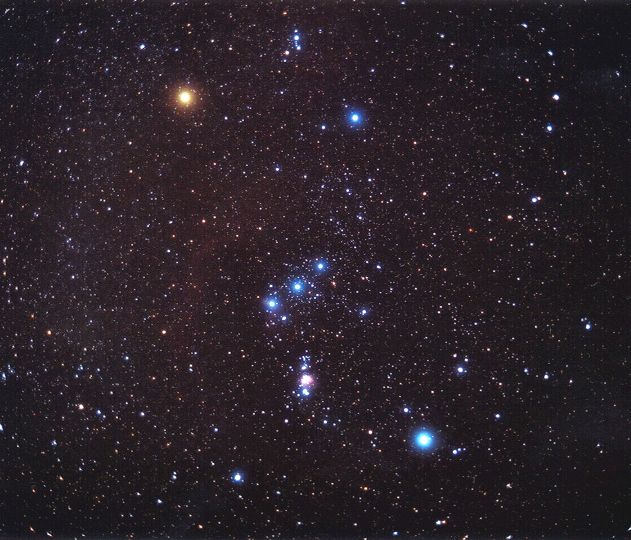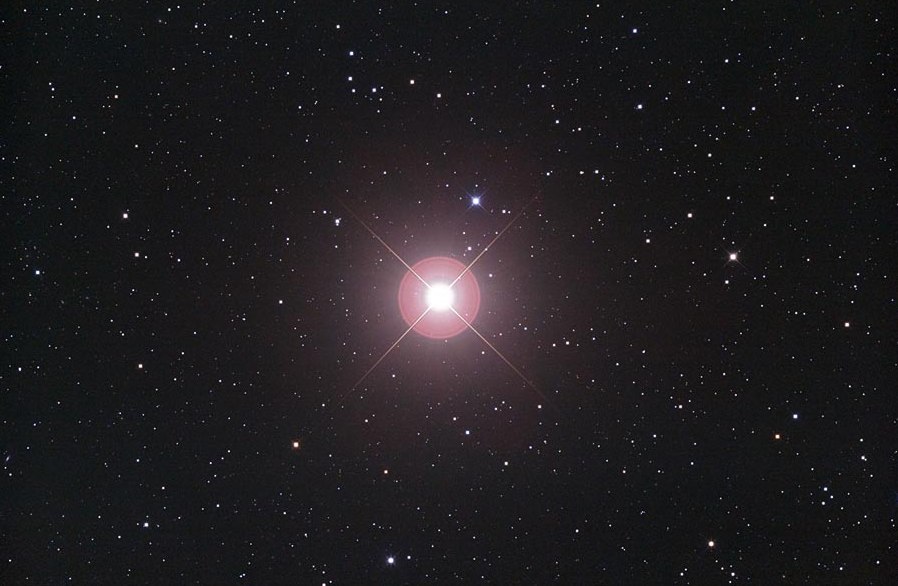“Can you bind the chains of the Pleiades? Can you loosen Orion’s belt? Can you bring forth the constellations in their seasons or lead out the Bear with its cubs? Do you know the laws of the heavens? Can you set up God’s dominion over the earth?” Job 38:31-33
The book of Job represents one of the most astonishing achievements in Hebrew literature. One of the first Old Testament texts to be written, Job is a poetic exploration of God’s goodness in light of evil and suffering.
Job’s story is mostly a tragedy. A paragon of righteousness – Job was the kind of guy who always read to the end of the iTunes Terms and Conditions before updating – Job underwent torment from Satan in the Tempter’s bid to prove that Job obeyed God simply because God had blessed him.
 Job lost pretty much everything. His wealth was stolen, his health was stripped, and his children died apparently senseless deaths. Job was ruined, and over the span of the next 900 verses, Job, his wife, and his remaining friends lamented and speculated about how God could permit such terror to befall a man of such character. Answers proved few and far between.
Job lost pretty much everything. His wealth was stolen, his health was stripped, and his children died apparently senseless deaths. Job was ruined, and over the span of the next 900 verses, Job, his wife, and his remaining friends lamented and speculated about how God could permit such terror to befall a man of such character. Answers proved few and far between.
Then, as the book concludes, God steps in to address the matter.
What we hear from God in Job 38 is not one of those “still small voice” kinds of things. Scripture actually says that God rises up and speaks to Job out of a whirlwind. It’s a TED Talk from a tornado.
What is God’s explanation for Job’s suffering? Does he say, “Well, Job, the truth is, it’s all Satan’s fault.”
Does God say, “Well, Job, I did this to refine you and make you a better person?”
No. God offers no self-defense. He pleads no extenuating circumstances. Instead, God reframes Job’s experience in light of God’s creative authority. What the Voice in the Storm actually says is: “Job, let me speak to you about your place in my grand cosmic plan.”
What follows is a four-chapter tour-de-force in which God details the intricacies of the animal world, the origins of weather, the power of the oceans, and the majesties of earth’s great beasts.
God draws Job’s attention to these miracles to note that there are profounder realities all around Job. There are majesties in creation that Job cannot fathom.
That’s where the stars come in. I love these verses from chapter 38:
“Can you bind the chains of the Pleiades? Can you loosen Orion’s belt? Can you bring forth the constellations in their seasons or lead out the Bear with its cubs? Do you know the laws of the heavens? Can you set up God’s dominion over the earth?”
For an astronomy geek like me, this passage is catnip. All indications are that this 3000-year-old scripture is describing constellations we’re still familiar with today.
 The first star-grouping mentioned is the Pleiades. The Pleiades is the name of a group of stars that shines prominently in the northern hemisphere. These beacons are known to some as the Seven Sisters, but in reality, the Pleiades are a cluster of around a thousand tightly-bound stars. Known to many ancient civilizations for their soft bluish appearance, the Pleiades glow beautifully from a distance of around 450 light years.
The first star-grouping mentioned is the Pleiades. The Pleiades is the name of a group of stars that shines prominently in the northern hemisphere. These beacons are known to some as the Seven Sisters, but in reality, the Pleiades are a cluster of around a thousand tightly-bound stars. Known to many ancient civilizations for their soft bluish appearance, the Pleiades glow beautifully from a distance of around 450 light years.
God says “Job, could you put chains around a thousand stars? Could you wrap them up into a nice little package with a bow on top? Because I can.”
Next, God calls Job’s attention to the belt of Orion. Below is a picture of Orion with the clearly-visible sash of three stars going across the Hunter’s waist:

This belt comprises three massive and marvelous stars. Their names, from left to right, are Alnitak, Alnilam, and Mintaka.
These three are among the most distant stars that we can see with the naked eye, ranging between 900 and 1300 light years away. This means that the light waves that beam toward us from Alnilam have been zipping through outer space at nearly 700 million miles per hour since around the year 700 AD.
With these stars at such a great distance, how is it possible that Orion’s belt can be so prominent in the sky? The answer: these three are extraordinarily powerful stars. The latest calculations estimate Alnilam’s luminosity at 863,000 times the brightness of the sun. Pack all the SPF you can find for your next weekend getaway to Orion.
Think about the energy in that star. And God says – “Job, I can manipulate that group of stars like you unlace your Nikes.”
(For my part, there are pickle jars that wear me out!)
Finally, Job 38:32 makes mention of “The Bear and its cubs”. Most translators believe that the term “the Bear” – in Hebrew it’s named Ayish – is the star that modern astronomers call Arcturus. Arcturus is a beautiful yellowish-orange sun easily located by following the handle of the Big Dipper away from the bowl a few degrees.
 Arcturus isn’t the biggest star out there, but it’s one of the most fascinating – especially as we see science corresponding to scripture.
Arcturus isn’t the biggest star out there, but it’s one of the most fascinating – especially as we see science corresponding to scripture.
For a long time, interpreters have supposed that the “cubs” mentioned in this verse are the other chief stars of the Big Dipper, a constellation also known to history as “the Wagon”. And that may well be the case. But here’s what’s really interesting: With the help of modern astronomy’s instruments, we know that Arcturus does, in some sense, really does have “cubs”!
Check this out: Our sun journeys through space at about 12.5 miles per second. The stars of the Pleiades travel at about 25 miles per second. Arcturus, the star God points out to Job, zips through the galaxy at a mind-melting 257 miles per second. Astronomer Charles Burckhalter says that Arcturus seems to be operating under a set of physical laws unto itself. It is a kind of galactic runaway train.
It moves so rapidly, scientists have discovered, that Arcturus has “sucked up” 52 additional stars in its wake. These smaller suns follow along like chicks behind a hen, or like cubs behind their mother.
God says to Job – “See that star and all of the other ones following it? Can you set its course? Can you lead The Bear? Can you steer The Wagon? I can, Job. I lead those heavenly bodies around like a poodle on a Sunday afternoon walk.”
Arcturus, Mintaka, and the Pleiades are just a handful of stars in a Milky Way galaxy that includes perhaps 400 billion – with a “B” – stars. Until recently, the Milky Way was thought to be one of 200 billion similar groupings. But in the last 30 months, major research has concluded that that number was off. By a lot.
Recent calculations by astronomers in England suggest that there are, at minimum, 2 trillion – now we’re using the T – galaxies in the universe. That ballparks the number of individual stars in the universe at this number:
1,000,000,000,000,000,000,000,000
And you just have to love how the Bible describes their creation. Genesis 1:16 says: God made two great lights—the greater light to govern the day and the lesser light to govern the night. He also made the stars.
What a line! It’s so nonchalant, so parenthetical. He also made the stars. It’s like: Yes, I went to the bank and to City Hall. I also picked up gum.
That’s what creating this expanse of stars feels like to God. Effortless and awesome.
This is the power of the Maker. This is the authority and brilliance of Job’s God.
As he sat in ashes and uncertainty, Job needed something more than a “why” to understand his suffering. So rather than create a PowerPoint presentation to reason away his hurts, God reminded Job that what God is capable of so far exceeds Job’s Euclidean mind that, no matter how long he factored it out, suffering wouldn’t make sense for Job. God’s ways are so profoundly Other that we are encouraged to simply trust in him.
Now, on its surface, that would be a fairly theologically-sound answer. It’s a kind of theodicy: It’s a God thing, we wouldn’t understand.
But it’s also true that for many of us, this sort of answer isn’t emotionally satisfying. It’s not incorrect, but for most people experiencing the agonies of poverty, pain, or persecution, it’s not sufficient.
Thankfully – incredibly – there is more to the story. Because 2 Corinthians 4:6 says this: God, who said, “Let light shine out of darkness,” made his light shine in our hearts to give us the light of the knowledge of God’s glory displayed in the face of Jesus Christ.
How can we have knowledge of the Glory of this God? How can we truly connect with the Master of the galaxies? How can we understand the King of Creation, who spoke the sun and the moon and Arcturus into place? We can know him – and our place in this cosmos – by looking at the face of Jesus of Nazareth.
This face that welcomes children, that defends the condemned, is the face of God. This face that teaches about love and justice is the face of the Maker of the universe. This scarred face, bleeding red from a crown of thorns, reveals to us the true character of the Designer of the world. And his true character is not only creative power, it is also compassionate love.
How can you make sense of your suffering? Not with terse logic, not with an appeal to cause and effect, not even with “this is going to make me stronger someday.”
We understand our suffering by looking at the Man on the Cross, Jesus Christ. A kind of Greater Job, he also endured grief and death to honor God and upend the Tempter. In his suffering, we see that God is not dispassionate toward human grief; on the contrary, God knows the pains and heartaches of life from personal experience.
How do we find the strength to live through pain? We begin to trust God when, gazing on the stars, we apprehend his divine power and creativity. But we only fall fully headlong into faith when we see the scars in Jesus’ hands and feet. When we look to Jesus, we realize that God knows the fullness of human pain, having carried it to the cross. Lift up your eyes and behold.


